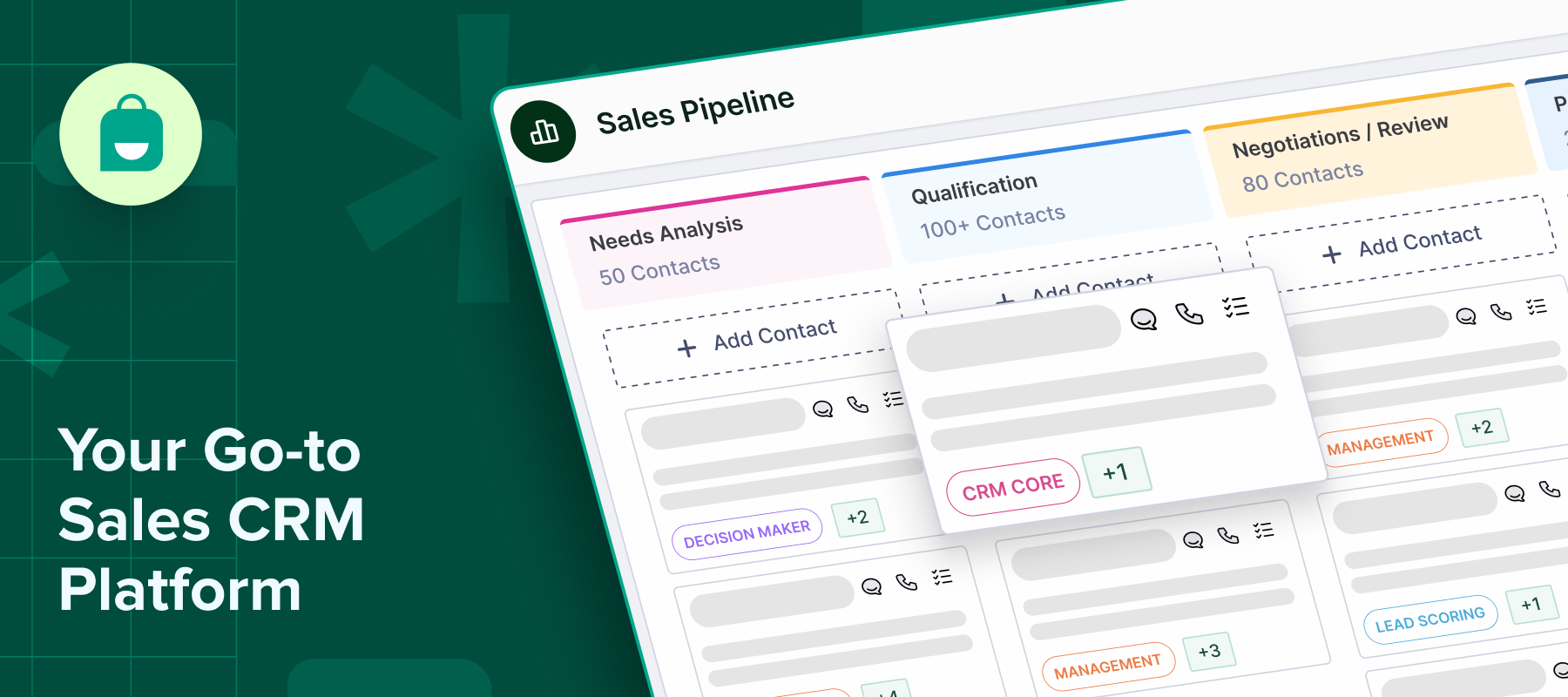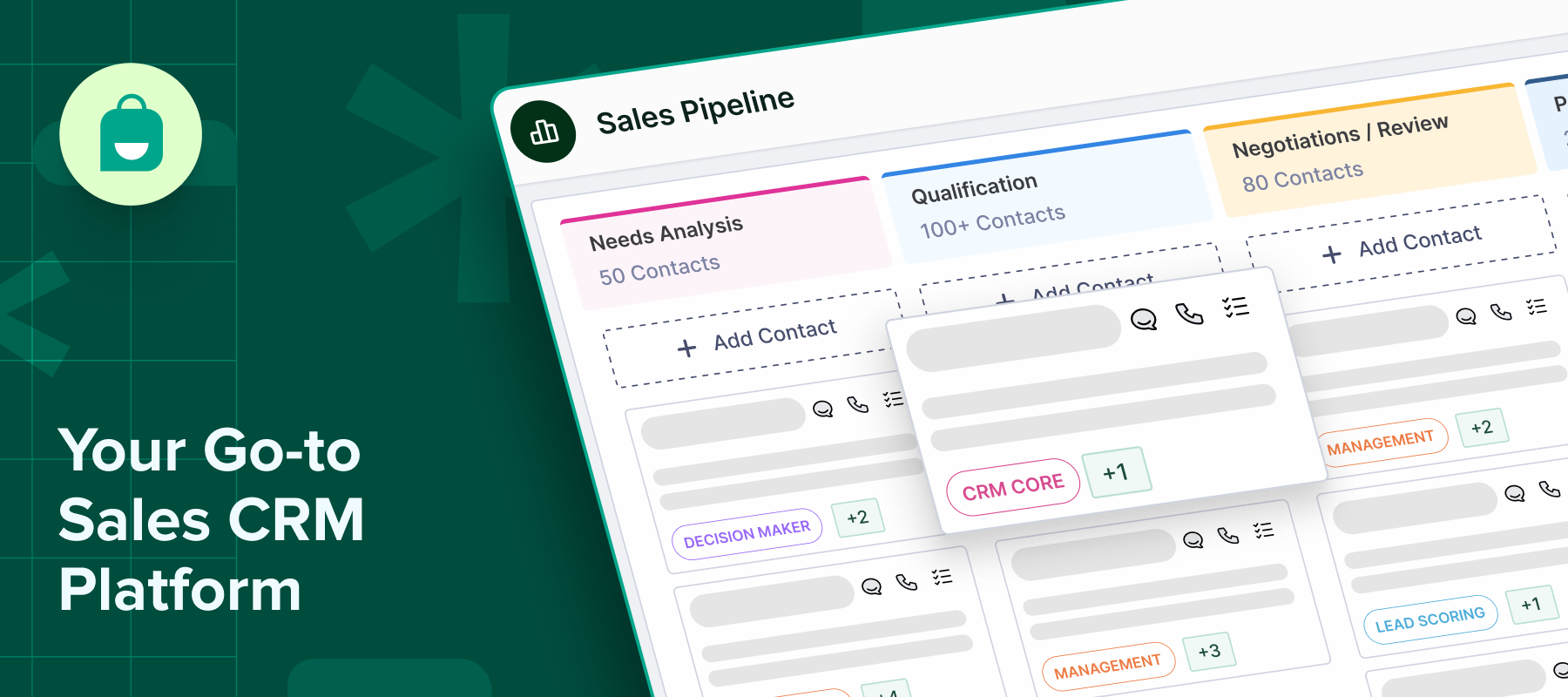Customer follow-ups are one of the most important, often overlooked, aspects of successful selling. No matter the industry, consistent follow-ups are a major part of building relationships and staying top of the customer’s mind, ultimately helping businesses close more deals.
But when follow-ups are done manually, there is a higher chance for slip-ups such as delayed responses, missed reminders, or inconsistent outreach, all of which can easily derail a potential sale. This is where automation can be extremely impactful.
In this post, we will explore how automating customer follow-ups with a sales CRM can help your team stay on track, improve response rates, and close deals faster without the stress of managing it all manually.
What is follow-up automation in CRM?
Follow-up automation in CRM refers to the use of a CRM platform for automated workflows and triggers, to share timely, personalized messages (emails, WhatsApp messages, task reminders, etc.) to leads and customers based on their behavior or stage in the sales pipeline.
Instead of having to rely on manual outreach, CRM automation ensures that each and every follow-up is scheduled, consistent, and aligned with the customer’s journey, hence freeing up your sales team to focus on more strategic conversations.
How CRM tools help automate customer follow-ups
Here are some of the major ways in which CRM tools can help businesses automate customer follow-ups:
Scheduling personalized follow-up emails
With email follow-up automation, CRMs let you create much more tailored sequences that are triggered based on customer actions. This ensures timely communication that feels highly relevant, without sounding robotic.
Sending automated reminders and notifications
You can use CRM task automation to set reminders for sales representatives/teams and auto-notifications for leads. This is highly effective in ensuring that nothing falls through the cracks, and every opportunity gets the timely attention that it demands.
Tracking customer engagement in real-time
Having a powerful CRM for customer engagement gives you real-time visibility into how leads interact with your emails, WhatsApp messages, and website. These insights can be critical as they can help sales teams prioritize high-intent leads and personalize outreach based on actual behavior.
Automating SMS/WhatsApp follow-ups
Modern CRMs like Interakt support CRM WhatsApp follow-ups, making it easier to connect with leads where they’re most active. Automating channels like SMS or WhatsApp, can help improve average response rates while significantly reducing any friction in your communication.
Integrating with calendars and task management
CRM tools support task automation by integrating with calendar apps and your internal task boards. In fast-paced sales environments, this is highly effective for scheduling your follow-ups efficiently.
Setting up drip campaigns for nurturing leads
Convincing leads who are not yet ready to convert can be tough, with more pressing tasks requiring the attention of your workforce. This can be remedied with automated lead nurturing through drip campaigns. These pre-set sequences can work gradually to build interest and trust, helping you guide prospects through the funnel at their own pace.
Using AI for timing and personalization
Use AI-powered CRMs to optimize follow-up timing and messaging based on customer activity. This kind of smart personalization can significantly boost engagement and ensure stronger connections that can have positive impacts on your short and long-term sales goals.
Following up based on customer behavior triggers
Behavior-based triggers, like clicking a link, downloading a brochure, or abandoning a cart, can automatically initiate a follow-up. Your messages are thus always delivered at the right time with the right content, improving your chances of converting leads into customers.
Benefits of setting up automated follow-ups in CRM
Some of the major benefits of setting up automated follow-ups in CRM include:
Improved response rates
When the follow-ups are timely and personalized, people are far more likely to respond to you. Automation ensures your message reaches leads when they’re most engaged, thus enticing a reply and a possible conversion.
Faster deal closures
With automated sales follow-ups, speed becomes your best advantage, letting you keep the conversation going with minimal lag between touchpoints. This helps your team move deals through the pipeline much more efficiently.
Better lead nurturing
By personalizing CRM follow-ups, you can send targeted content based on where each lead is in the funnel. This keeps them engaged and educated, increasing the chances of conversion over time.
Consistent customer experience
No matter who’s managing the account, automated workflows ensure every lead gets relevant and helpful follow-ups in time. This level of consistency that manual follow-ups lack can contribute directly into building trust and reinforcing your brand.
Higher team productivity
Instead of spending hours tracking each follow-up manually, you can have CRM automation handle the busywork. This way your teams can place a stronger focus on strategy and relationship-building.
Best practices for setting up automated follow-ups in CRM
To get the most out of automated sales follow-ups, it’s important to set them up thoughtfully. Here are a few best practices to guide you as you automate customer follow-ups with sales CRM:
Personalize interactions at all touchpoints
Automation does not have to be generic, so tailor every message using the lead’s name, activity history, and pain points. This keeps your communication relevant and helps build trust, even when it’s automated.
Set the right follow-up frequency
Maintain the right frequency rather than spamming leads or going quiet for too long. Analyze your average sales cycle and engagement data to understand how often and when you need to reach out. To put it simply, a well-timed nudge is better than five ignored messages.
Segment leads for tailored messaging
Not all leads are at the same stage or need the same information, so use CRM filters to segment them based on behavior, demographics, or intent. Tools like Interakt can make this simpler with dynamic lists and customizable tags.
Monitor and adjust automation flows
Regularly track performance metrics like open rates, replies, and conversions, to identify what’s working and what’s not. This data can be used to optimize your workflows to keep them fresh and effective.
Combine automation with occasional human touch
Automation is powerful, but it is also important to provide a human touch to seal deals. Use automation to streamline outreach, and step in manually when a deal is hot and requires a personal connection. Interakt CRM helps you identify those moments with real-time lead activity tracking.
Conclusion
The benefits of automating customer follow-ups can go beyond time savings, as it can boost conversions, build stronger relationships, and ensure no opportunity slips by. With the right CRM strategy in place, your sales team can focus more on closing deals and less on chasing reminders.
Ready to streamline your customer follow-ups and grow fast through smart automation?


